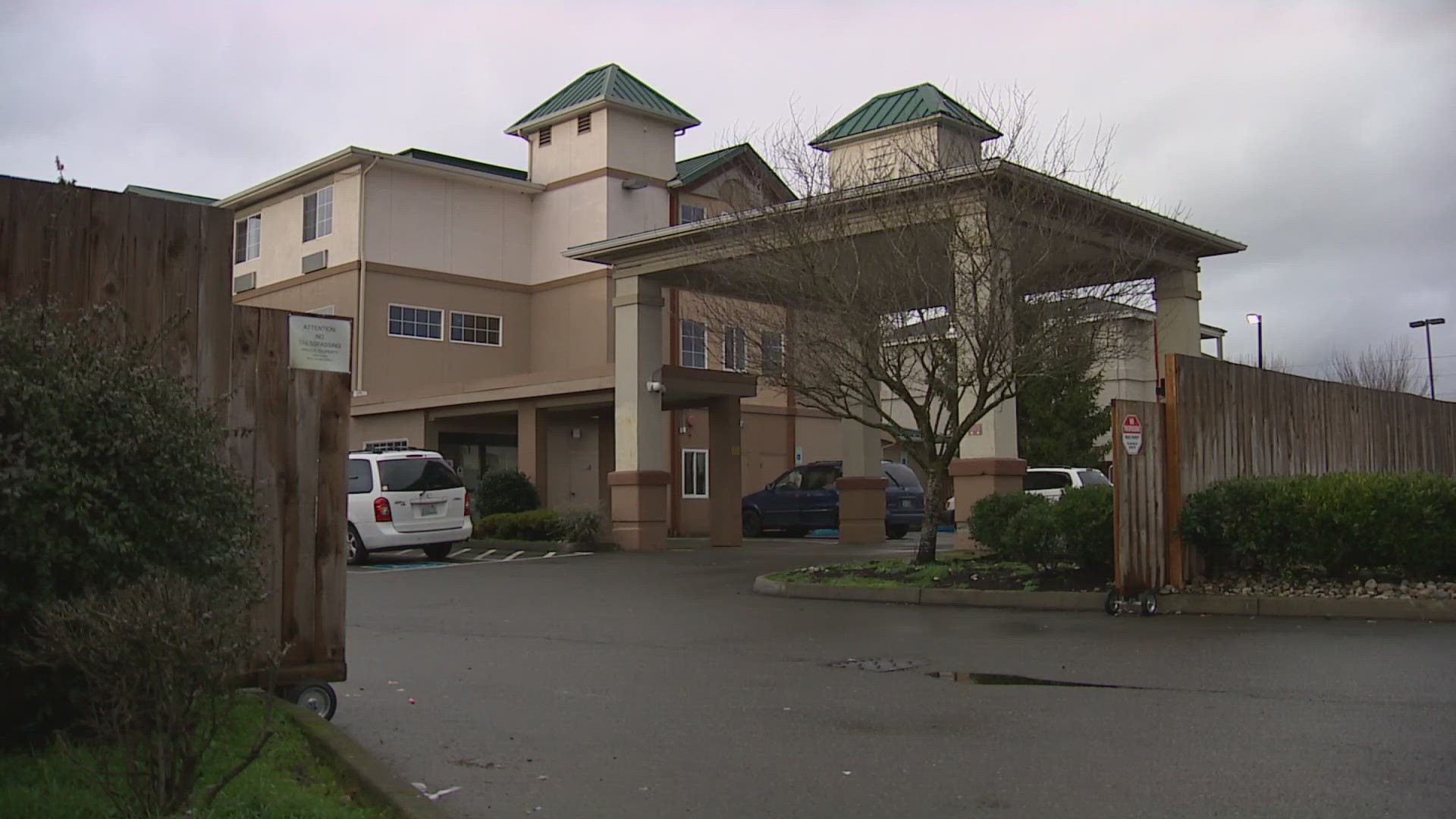TACOMA, Wash. — The City of Tacoma, City of Lakewood, Pierce County and the State Department of Commerce raised millions of dollars in 2021 to convert a Hosmer property into an emergency homeless shelter, run by the Low-Income Housing Institute. While the shelter hasn't met expectations, it's now transitioning to a more permanent solution.
It was a new approach for the city, and the goal was to give people a place to stay as they secure permanent, affordable housing.
“Permanent, affordable housing in any county is very scarce,” says Victoria Delucia of the Low Income Housing Institute (LiHi). “So the best thing that we could’ve done as an agency is purchase outright a building where we could easily renovate and convert.”
The city says 100 people have been connected to permanent housing since it began in December 2021, less than half of the expected 238 people.
The City of Tacoma was originally slated to end its funding for the project in 2023, but said the shelter’s rate for getting people housed was 43%. The placement rate for this type of shelter project usually hovers between 30-40%, according to Caleb Carbone, manager of Tacoma's Homeless Strategy, Systems and Service department.
While there isn’t another hotel conversion project in the works right now, the city says this project did create a rare opportunity to collaborate with other jurisdictions to address homelessness in Pierce County.
Myron Bernard of the Tacoma Rescue Mission says generally, building housing is a good first step. However, the solution is not a silver bullet, and much more needs to happen to truly help those who’re chronically homeless.
"A lot of the national data says that after five years, the placement rate is about 30%,” he said. “So you take someone who is chronically unhoused, you put them in a home, and then after five years, seven out of ten will return to the street. People were created for community, relationship, and a connection with others, and that doesn’t occur just because you put them into a home."
The institute said it’s proud of the work that’s been done, and is looking forward to the next step.
Currently, 21 people are still living in the shelter, and the institute says Tacoma has extended funding for the project to make sure all of the occupants will be moved into either permanent housing or another shelter as workers prepare to take in 40 unhoused veterans.
"We really changed our outlook into doing things to keep them here, right, instead of we want you to be housed elsewhere." Delucia said. “That’s the emergency shelter perspective: how do we stabilize you quickly and get you and get you into something, whereas now, this will be their home.”

